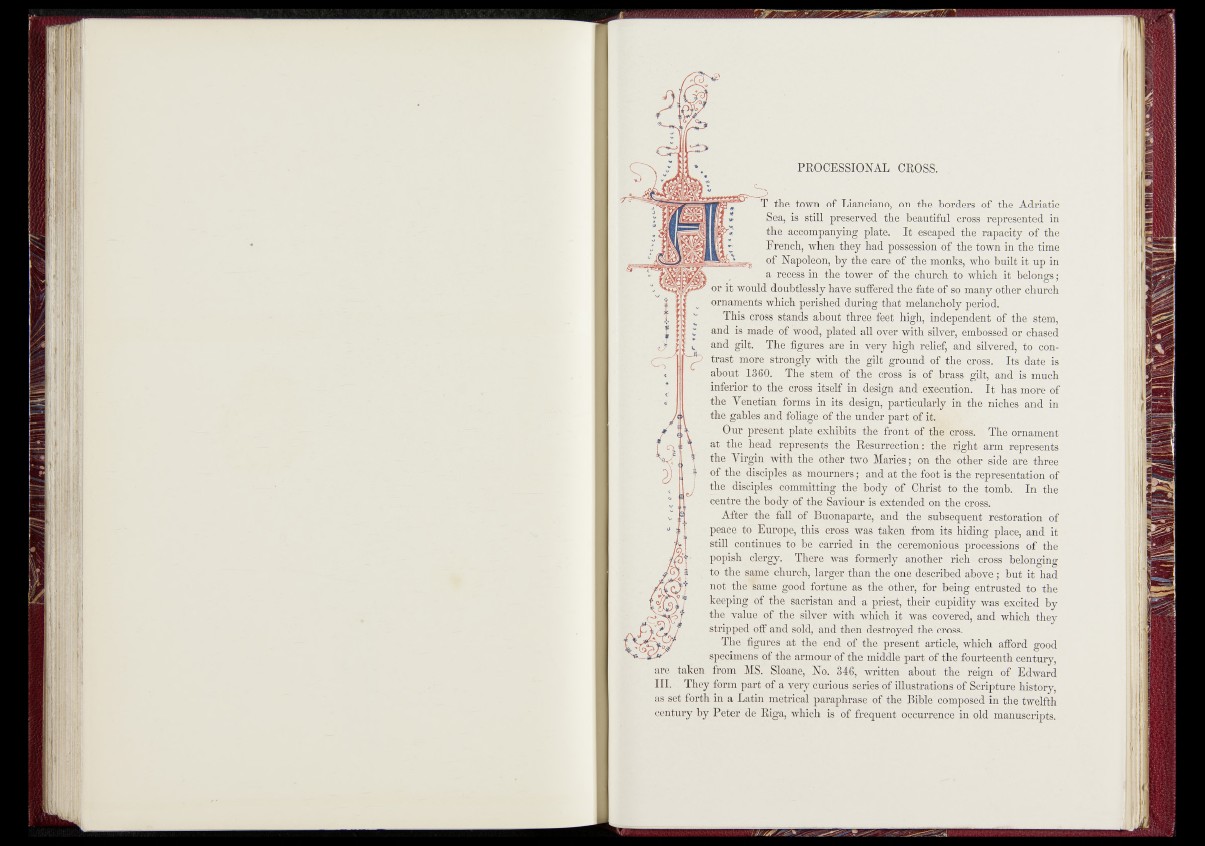
■
HiJ
Z2>
PROCESSIONAL CROSS.
EH
HMme^town onifthe borders of the Adriatic
^^^^&^l^ywrs^S'4^[j^fecautifbrtfcroB8 represented in
U t h j d ' a t e : ^ I ^ e ^ c n p e ( i BPe"rapacity of the
F r c m ® \ v o ^ ' C s s i o n ' of-the"town iu the time
BfefK3 ^ ) ^ ii« ^ E S B ^ ^M p j( «^ ^ ^ ^ v h o ? ^ ilt it up in
u'fpj-uroh ‘‘to -which it 'belongs;
Bj|ppffiwr.ould<■doub tie ^ ^M p J^freredtftlu> f jip^ffso many^tW' cl lurch
-"-■ This cross stands about three feet lfioh,B^ ^ ^®fflg^ tVc stem,
and is made of or chased
trast Tnore'-stfcmirlvAvi^m tho- ni|f^ o f d a t e is
Qh j J ’'i" Hi -i in Tffil *:T l * 11 3' gill,> and “is much
inferior to^tte cross pt-clf in’jdu-ogii HmPfj^iWtion.fflret has ifl&re of
the ^Venetian- forms in its/design, particularity; in' the, niches and in
the gablesiand foliago(of thh umlfraiart of i'ffe;
of th^cr^Ss. ‘ The ornament
af ' f ^ 3 hea;d4represenfe 1 h iy i^S ^ ^ M t h ^ ^ g h ^ ^ represents
the Virgin .»i ’lOyfli r/WO u. jifffrj
of the ?dii( iplc& as m(mrners; 8md\am ^ ^ ^ ^ ^ ^M ^firehcnt}irion of
th'e*(iiship] es (Committing th e ^ h y of tCJiristp ^ t lf^toinb.^ In Cilia
fMntre' the body-of the Saviour is*exSendbd‘on- fl ic'cross., -
After1 Jfhe fall'of Buonaparte,^ and fdi "’nli' |n> m r -ioration^of
peaceto Europe j this-bf&^s was taken hiding-place, and it
stall continues.,to be^carri^d^in .the^^^nlotni®'usVpro(‘eb''ions of the
RjopisJf clergy. There was f()rmcrl}%a^t’lier rich /cross’ belonging
to' the same < hunjjtj. larger than the nmrSF*rik d ubo\e; but it had
not thetame gpod fontnrie as the otlier, for bunc;<entrusted to the
keeiping of-the'sacristan and ^praest^heir'cupidity was'expited by
the value. silver with which i|/was covered,, and which they
stripped pff and sold, and then destroyed tli^/To»".
The figures at^the ‘ end ,off the present article, which afford good
specimens of'the armour of th^md.d’dld'-part hfi-fhe fourteenth century,
are taken from MS. Sloane, , K 3iB^r writ|et^hbc»ut ■ the reign, of Edward
III. They form part of a very pfiridns series of ’MustpJtipns of Scripture history,
as set forth in a Latin metrical paraphrase of the Ri^Ie,^composed in the twelfth
century by Peter de Riga, which is of ffe&fent occurrence in oldi manuscripts.
I
mmm&mmai